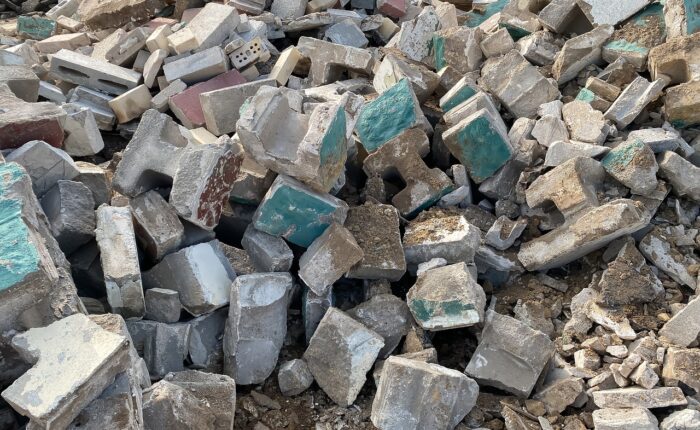Construction, Renovation and Demolition Waste in Canada – The Problem and What We Can Do

Canada produces about 4 million tonnes of Construction, Renovation, and Demolition (CRD) waste every year. Examples of CRD waste materials include concrete, wood, metals, glass, and plastic. About 20% of that waste is reused or recycled while the remaining 80% is disposed, mostly in landfills. Projects performed across Canada show that it is possible to divert as much as 95% of CRD waste through reuse and recycling. Diverting waste creates jobs. According to one estimate, there are 7 jobs for every 1,000 tonnes of waste diverted. Diverting CRD waste also means less waste heading to landfill sites that in some cases are almost full, reduced risk of pollutants causing harm to humans and natural ecosystems, and reduced carbon emissions due to less of a need to produce virgin construction materials.
The Solutions
In 2019 the Canadian Council of Ministers of the Environment (CCME) – composed of environment ministers from the federal, provincial and territorial governments – released a guide on policies to reduce CRD waste. Here are some of the noteworthy ideas from the guide. First is the notion of Extended Producer Responsibility (EPR) where manufacturers, brand owners and/or importers are responsible for the funding and operation of the post-consumer stage of a product. This means shifting the responsibility of product end of life in such a way that ensures optimal use of the product after consumer usage. For CRD waste consider the example of the California Carpet Stewardship Bill which ensures diversion of used carpets from landfill through a retailer carpet recycling plan where retailers obtain funds through a fee for new carpets purchased.
Second is the use of waste bans where certain materials (eg. target waste, hazardous items and recyclable materials) cannot be disposed of or transported to different areas. Consider the example of Nova Scotia’s 1997 disposal ban for compostable organic material. This resulted in the creation of private sector group’s setup to deal with organic material. Nova Scotia has found that the benefits of the ban (diversion, jobs, innovation) outweigh the costs of compliance and enforcement. At present, the province has banned almost 20 materials and has a disposal rate about 50% lower than the Canadian average.
Third is the use of virgin material taxes imposed on the use of newly extracted natural resources. This approach is intended to increase use of renewable materials in new construction sites due to increased costs of virgin materials. Consider the UK Aggregates Levy which taxes virgin sand, gravel, and crushed rock used for construction purposes at about $4 / tonne of material. The tax has been successful in increasing the use of recycled materials to about 25% of the market.
Fourth is the use of building codes and green building certifications which encourage environmentally friendly policies for CRD waste. Building codes provide technical specifications for the design, construction, renovation and demolition of building structures and can include CRD waste diversion policies. Green building certifications can help ensure that buildings meet strong environmentally friendly requirements which can include policies related to CRD waste. An example of a green building certification is the Leadership in Energy and Environmental Design (LEED) certification.
Fifth is the increase of supply and demand for CRD materials through materials exchanges, reuse centres and retailers who can purchase, process, refurbish and sell the CRD materials. This approach also includes procurement of diverted CRD materials for government construction projects. An example of improving supply of diverted CRD materials is the Habitat for Humanity ReStore centre in Yellowknife (opened in June 2016) that sells building materials at a low price.
Using a combination of the above methods can help ensure a successful CRD waste management approach.
